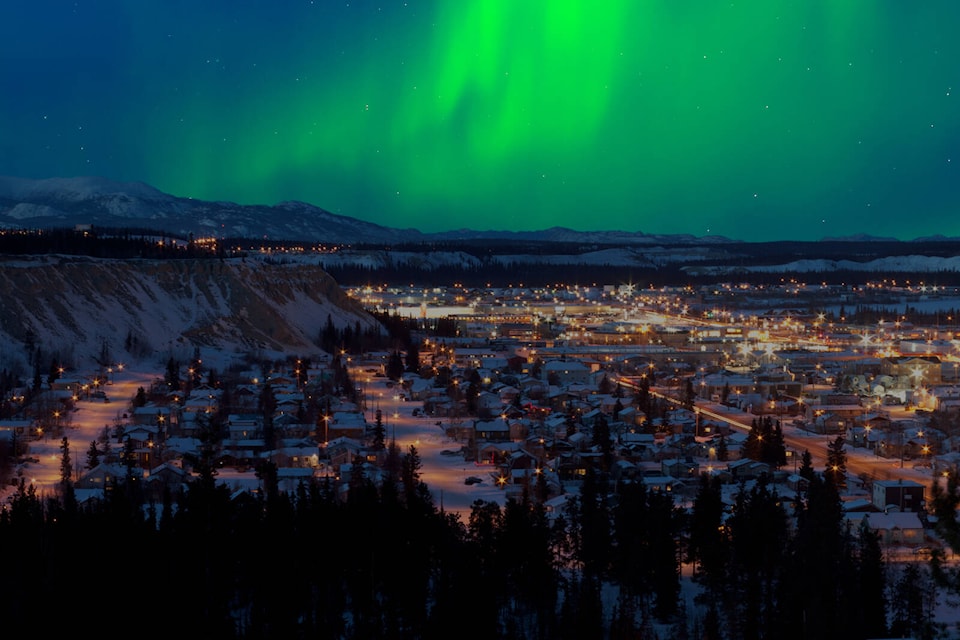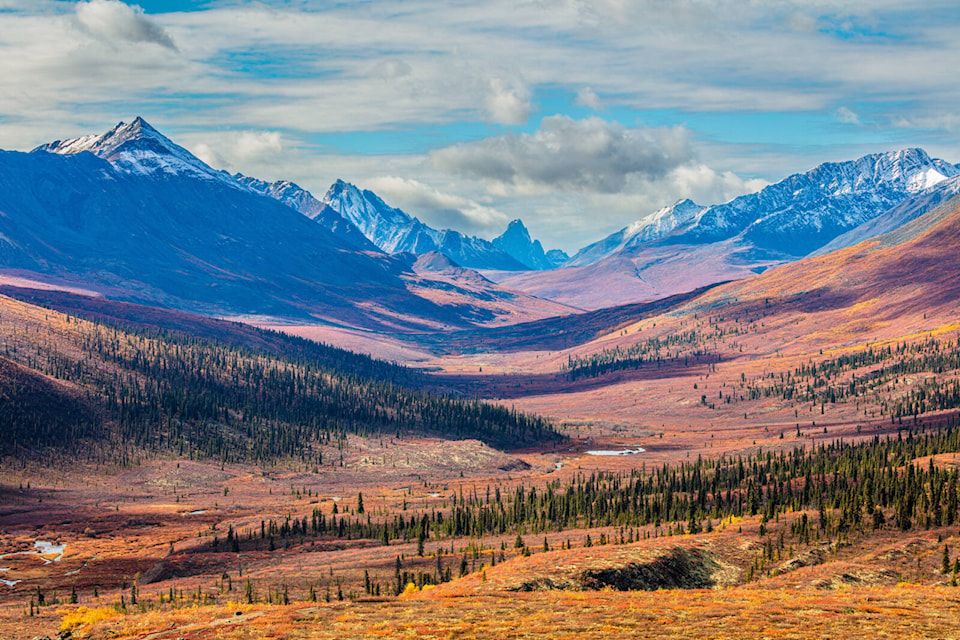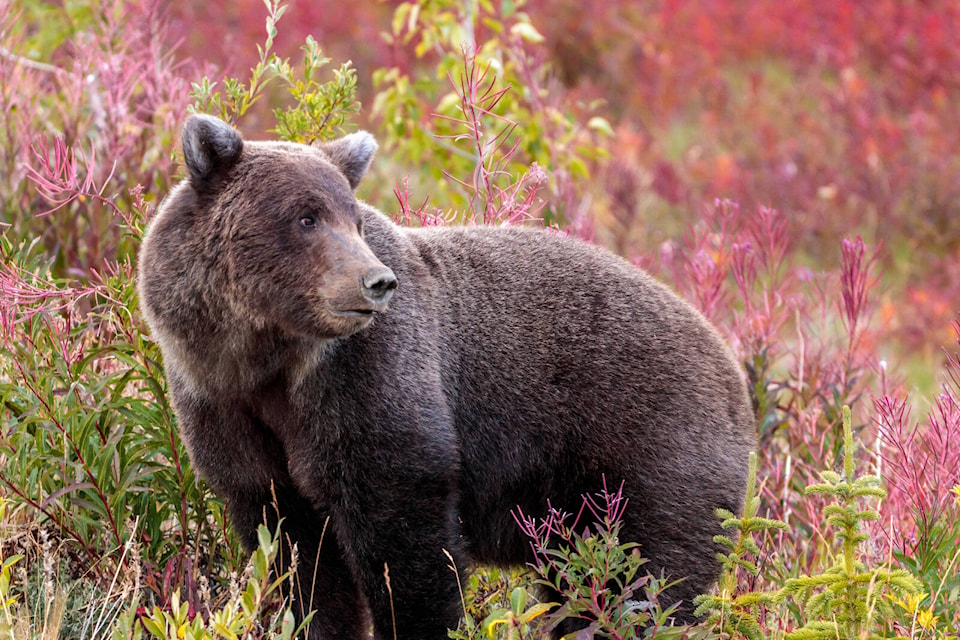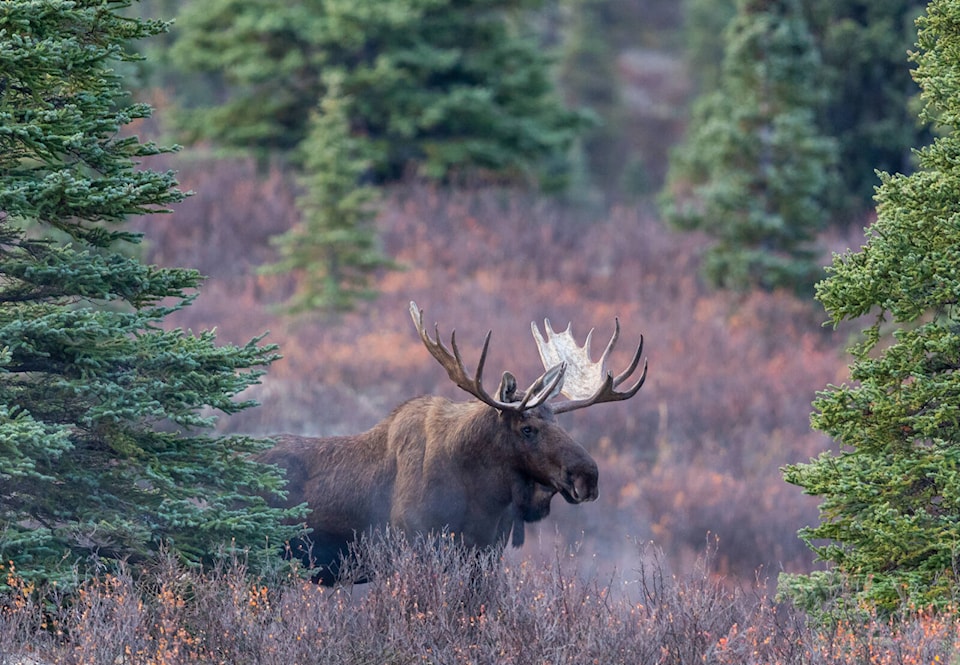The Yukon, in northwest Canada, is a land of extremes – from the midnight sun of summer to the celestial starscape of the northern lights during fall and winter.
Yukon has a stunning landscape, rich history and vibrant cultures, which can offer visitors a glimpse into one of the world’s last great frontiers.
Begin your adventure in Whitehorse, the capital of the vast territory. Here, the long rivers, mountains and expansive forests set the stage for an unforgettable exploration, whether you’re canoeing on the Yukon River, hiking the Chilkoot Trail or mountain biking through Miles Canyon.
Midnight sun
In the summer months, daylight extends into the night with the midnight sun. While during the winter months, the northern lights (Aurora Borealis) illuminate the winter skies, with shapes that almost seem unreal.
The midnight sun happens between late May to early August, providing nearly 24 hours of daylight at its peak.
As the capital and gateway to the rest of the Yukon, Whitehorse offers a vibrant base from which to explore the surrounding wilderness under the midnight sun. The city itself, situated along the banks of the Yukon River, offers beautiful trails and viewpoints that remain bathed in light well into the night.
Steeped in the history of the Klondike Gold Rush, Dawson City provides a picturesque backdrop to the phenomenon of the midnight sun. The Midnight Dome, a nearby hill overlooking the city, offers panoramic views of the endless daylight sprawling over the town and the surrounding wilderness.
Home to Canada’s highest peak (Mount Logan) and vast ice fields, Kluane offers some of the most dramatic landscapes under the midnight sun. Hiking or camping here during this time means being surrounded by breathtaking scenery in broad daylight, no matter the hour.

The northern lights
The northern lights, or Aurora Borealis, are most visible in the Yukon from late August to mid-April. This dazzling natural light show is best viewed away from city lights, under clear, dark skies.
- Tombstone Territorial Park: Known for its high peaks and unique landscape, Tombstone offers some of the darkest skies, perfect for viewing the northern lights. The park’s remote location means very little light pollution, allowing for spectacular aurora displays.
- Kluane Lake: Offering another vantage point within the Kluane region, Kluane Lake is particularly stunning as the northern lights reflect off its large, serene water surface. The surrounding mountains create a dramatic silhouette against the night sky illuminated by the aurora.
- Dempster Highway: Stretching from near Dawson City to the Arctic Circle and beyond, the Dempster Highway traverses some of the Yukon’s most remote areas. This isolation makes it an exceptional route for chasing the northern lights, with numerous spots along the way where you can pull over and gaze upwards into the celestial skies.

READ MORE: Walking the Dempster
On a cultural front
The Yukon is home to First Nations cultures that have thrived in this remote landscape for thousands of years. Share insights into the traditions, art and stories of the Yukon’s indigenous people, emphasizing opportunities for visitors to engage respectfully with these cultures through festivals, museums and community-led tours.
1. Visit the cultural centres and museums
- Kwanlin Dün Cultural Centre (Whitehorse): Located on the banks of the Yukon River, this cultural centre is a gathering place that celebrates the heritage and contemporary way of life of the Kwanlin Dün First Nation and other indigenous peoples of the Yukon. The centre offers exhibitions, storytelling sessions and cultural programs.
- Dänojà Zho Cultural Centre (Dawson City): This centre tells the story of the Tr’ondëk Hwëch’in people, offering visitors a chance to learn about their history, land and culture through guided tours, films, and exhibits.
- MacBride Museum (Whitehorse): Learn about the history of the Yukon, including the Gold Rush, Indigenous cultures, and the natural history of the region, through interactive exhibits and historical artifacts.
2. Festivals & workshops
- First Nations festivals and gatherings: The Yukon hosts several festivals throughout the year that celebrate First Nations culture, such as the Adäka Cultural Festival in Whitehorse, which showcases Indigenous music, dance, art, and workshops.
- Traditional workshops: Engage in workshops led by indigenous artists or elders, where you can learn traditional crafts such as beading, carving or making moccasins.
3. Explore historic sites
- Dawson City: Once the heart of the Klondike Gold Rush, Dawson City now serves as a living museum. Stroll through its historic streets, visit the Dawson City Museum, and explore the gold fields to get a sense of the frenzied search for fortune that once swept through this region.
- SS Klondike National Historic Site (Whitehorse): Tour the SS Klondike, a restored sternwheeler that once transported cargo and passengers along the Yukon River. It’s a glimpse into the territory’s riverine commerce history.
READ MORE: Yukon’s SS Klondike is getting an escape room
4. Discover Yukon Art
- Yukon Arts Centre (Whitehorse): Experience contemporary art of the Yukon through galleries, performances and concerts at the Yukon Arts Centre, which hosts local, national and international artists.
- Art Galleries and Studios: Numerous galleries across the Yukon feature the work of local artists, ranging from indigenous art and crafts to modern and contemporary works.
5. Walk the Trails of Storytelling
- Carcross/Tagish First Nation: The Carcross/Tagish is rich in storytelling and history. Guided tours can provide insights into the land’s significance to the First Nations, as well as the stories that have been passed down through generations.
A glimpse into the gold rush
No story about the Yukon is complete without mentioning the Klondike Gold Rush. In the late 1890s, tens of thousands of gold-seekers ventured into the Yukon, transforming the regions landscape. Echoes of the past resonate through the abandoned towns and relics of the Klondike Gold Rush. It’s worth visiting the ghost towns, preserved sites, and the Klondike Gold Rush National Historical Park.
- Explore Dawson City: Dawson City, the epicentre of the Gold Rush, remains a living museum of the era. Its well-preserved buildings, wooden sidewalks and historic sites offer a glimpse into the bustling life of the late 19th century. Guided walking tours of Dawson City take you through its historic streets, introducing the stories of prospectors, entrepreneurs and adventurers who sought their fortunes here. Visit Dredge No. 4 National Historic Site, a giant gold dredge and relic from the gold mining industry, to understand the scale and mechanics of gold mining operations after the initial rush.
[gps-image name="35922483_web1_240404-WCT-YukonTravel_3.jpeg"]
- Pan for gold: Try your hand at gold panning. Various sites around Dawson City and along the Klondike River offer visitors the chance to pan for gold, teaching the techniques used by the original prospectors. Who knows? You might find a tiny piece of gold to take home as a souvenir!
- Visit Klondike Gold Rush National Historical Park: Though much of it is in Skagway, Alaska, the Chilkoot Trail – part of the park – was a major route to the goldfields. The park’s visitor centres offer insights into the gold rush trail, stories of those who traversed it, and the impact of the gold rush on the region’s development.
- Visit the Midnight Dome: For a panoramic view of Dawson City and the surrounding goldfields, drive or hike up to The Midnight Dome. It offers stunning views, especially during the midnight sun, and helps visualize the vastness of the territory affected by the gold rush.
- Explore the SS Klondike National Historic Site Though the SS Klondike didn’t sail until after the height of the Gold Rush, this sternwheeler played a crucial role in the Yukon’s riverine transport system, moving people, goods, and gold along the Yukon River. The SS Klondike National Historic Site in Whitehorse offers a glimpse into the later years of the gold rush era and the region’s development.
- Visit the Robert Service cabin: Robert Service, known as the “Bard of the Yukon,” captured the spirit of the Klondike Gold Rush in his poetry. His cabin in Dawson City is preserved as a historic site, where visitors can learn about his life, his works, and the era that inspired him.
- Discover Bonanza Creek: Bonanza Creek is the site where gold was first discovered, leading to the Klondike Gold Rush – see the original claim sites and learn about the early days of prospecting. The nearby Discovery Claim National Historic Site marks the spot that changed the Yukon forever.
For the wildlife dreamers
The Yukon’s vast wilderness is a haven for wildlife. Grizzly bears, moose, caribou and the rare lynx roam freely. The thrill of spotting these magnificent creatures in their natural habitat is a humbling experience, reminding us of our place in the natural order and the importance of preserving our land for generations to come.
- Wildlife viewing tours: Join a wildlife viewing tour led by experienced local guides who know the best spots to observe Yukon’s wildlife in their natural habitat. These tours can take you to remote locations where you can see animals such as moose, caribou, bears and wolves from a safe distance, ensuring both your safety and the well-being of the wildlife.

Joining a wildlife viewing tour led by experienced local guides can be one of the best ways to observe Yukon’s wildlife in their natural habitat. - Birdwatching: The Yukon is a haven for birdwatchers, especially during the migratory seasons in spring and fall. The Yukon River Delta, Kluane National Park, and Tombstone Territorial Park are excellent spots for observing a wide variety of bird species, including bald eagles, peregrine falcons and the rare trumpeter swan.
- Visit the Yukon Wildlife Preserve: The Yukon Wildlife Preserve, located near Whitehorse, offers a unique opportunity to see northern Canadian and Arctic wildlife up close. Spread over 700 acres, the preserve is home to 13 species of northern mammals in their natural environment. It’s a great place for photography and learning about the animals’ habits and habitats.
- Fishing: Yukon’s rivers and lakes are teeming with fish, including salmon, arctic grayling, and pike. Guided fishing expeditions can provide an exhilarating fishing experience and opportunities to spot wildlife near the water’s edge.
- Hiking in national parks and protected areas: Exploring the Yukon’s national parks and protected areas on foot is perhaps one of the best ways to encounter wildlife. Kluane National Park, Tombstone Territorial Park, and Ivvavik National Park offer spectacular hiking trails that traverse diverse ecosystems where wildlife sightings are a part of the adventure. Always remember to keep a safe distance from wildlife and follow park guidelines to minimize your impact.
- Canoeing and Kayaking: Paddling the Yukon’s rivers and lakes is a peaceful way to explore the territory’s stunning landscapes and a fantastic method to approach wildlife without disturbing them. The Yukon River offers several stretches where paddlers can spot beavers, otters and even moose along the banks.
READ MORE: By foot and paddle, 21 days on Yukon’s Gyuu Dazhoo Njik – The Snake River
Plan your adventures throughout the West Coast at westcoasttraveller.com and follow us on Facebook and Instagram @thewestcoasttraveller. And for the top West Coast Travel stories of the week delivered right to your inbox, sign up for our weekly Armchair Traveller newsletter!
